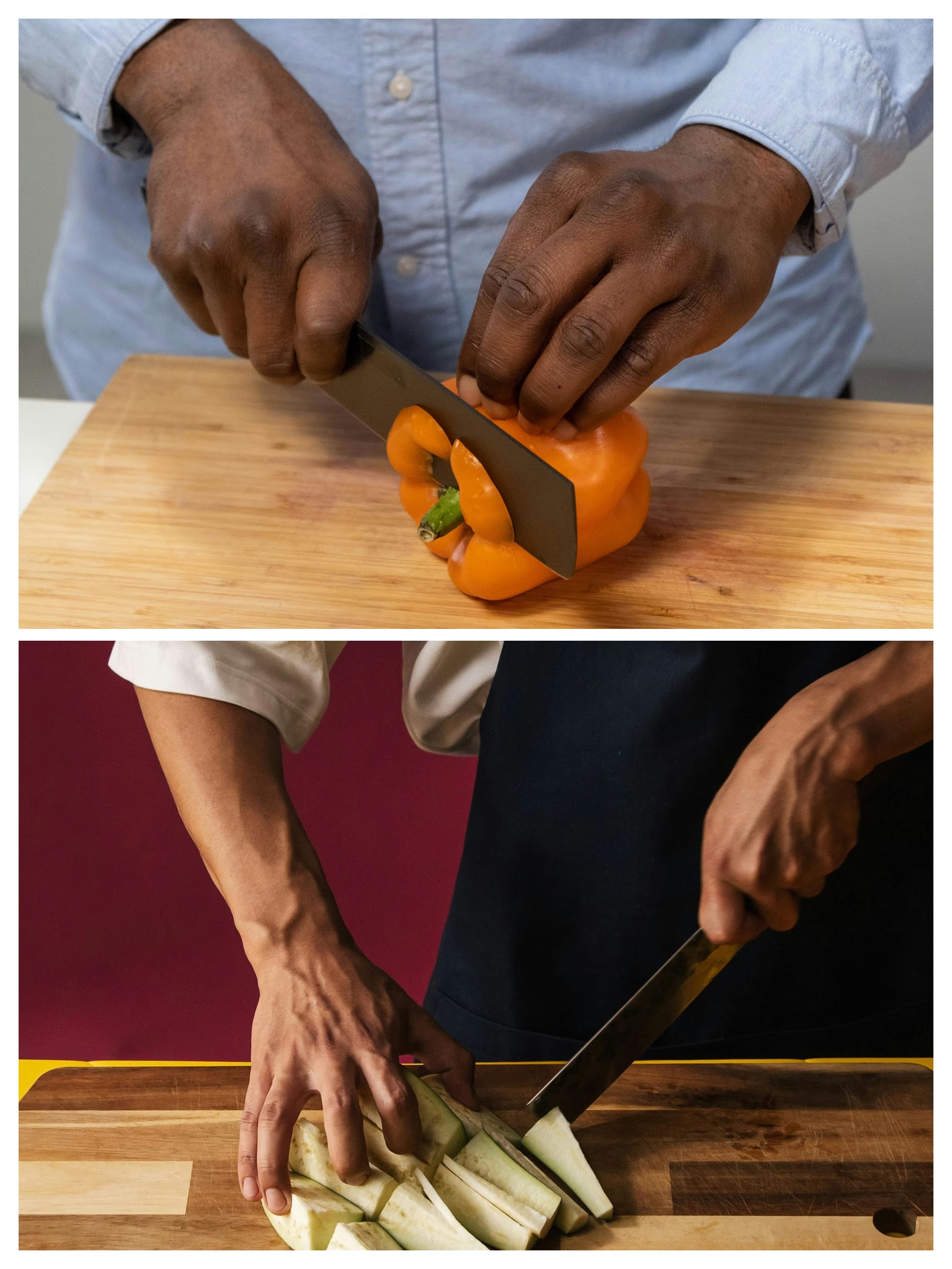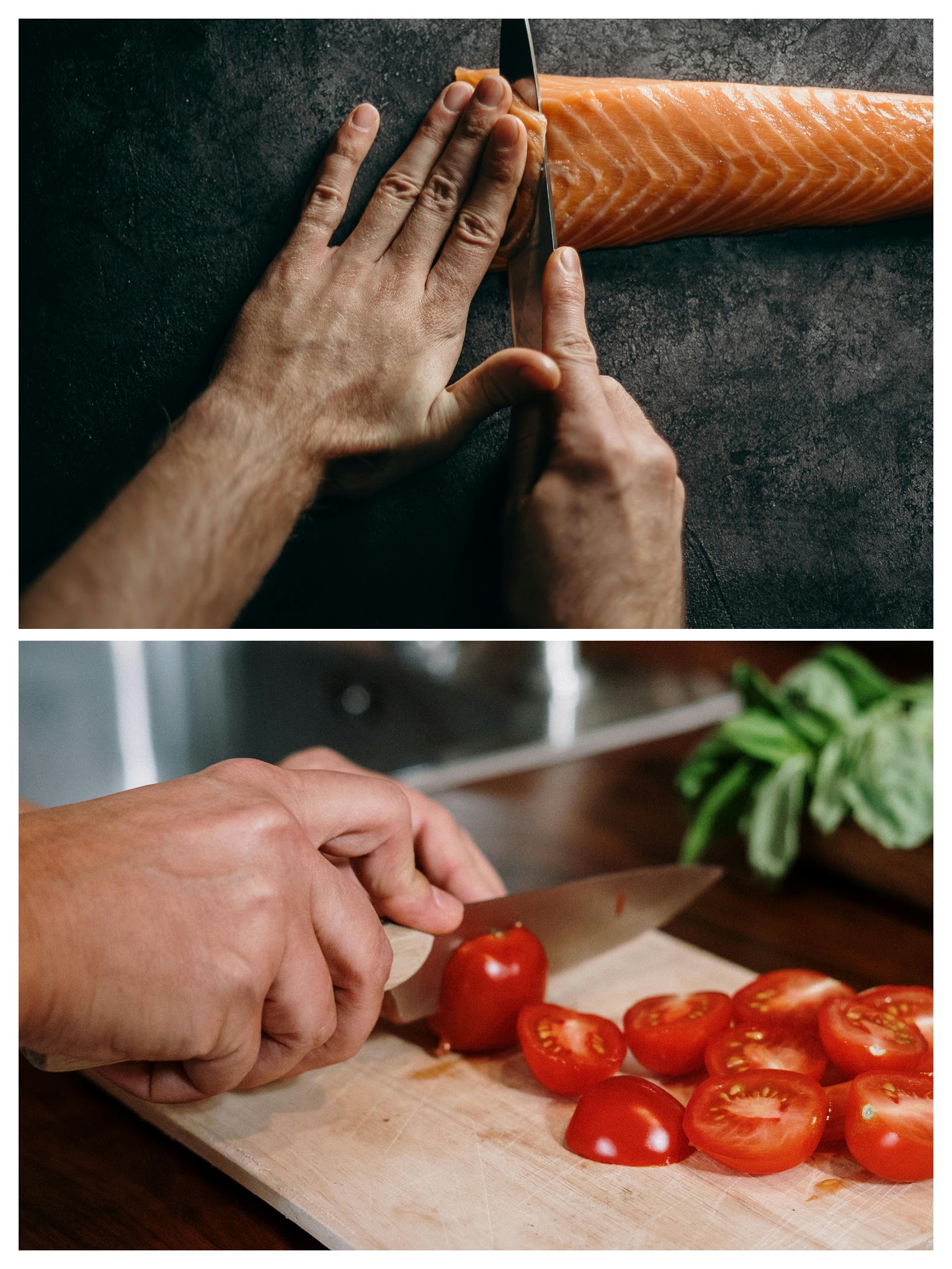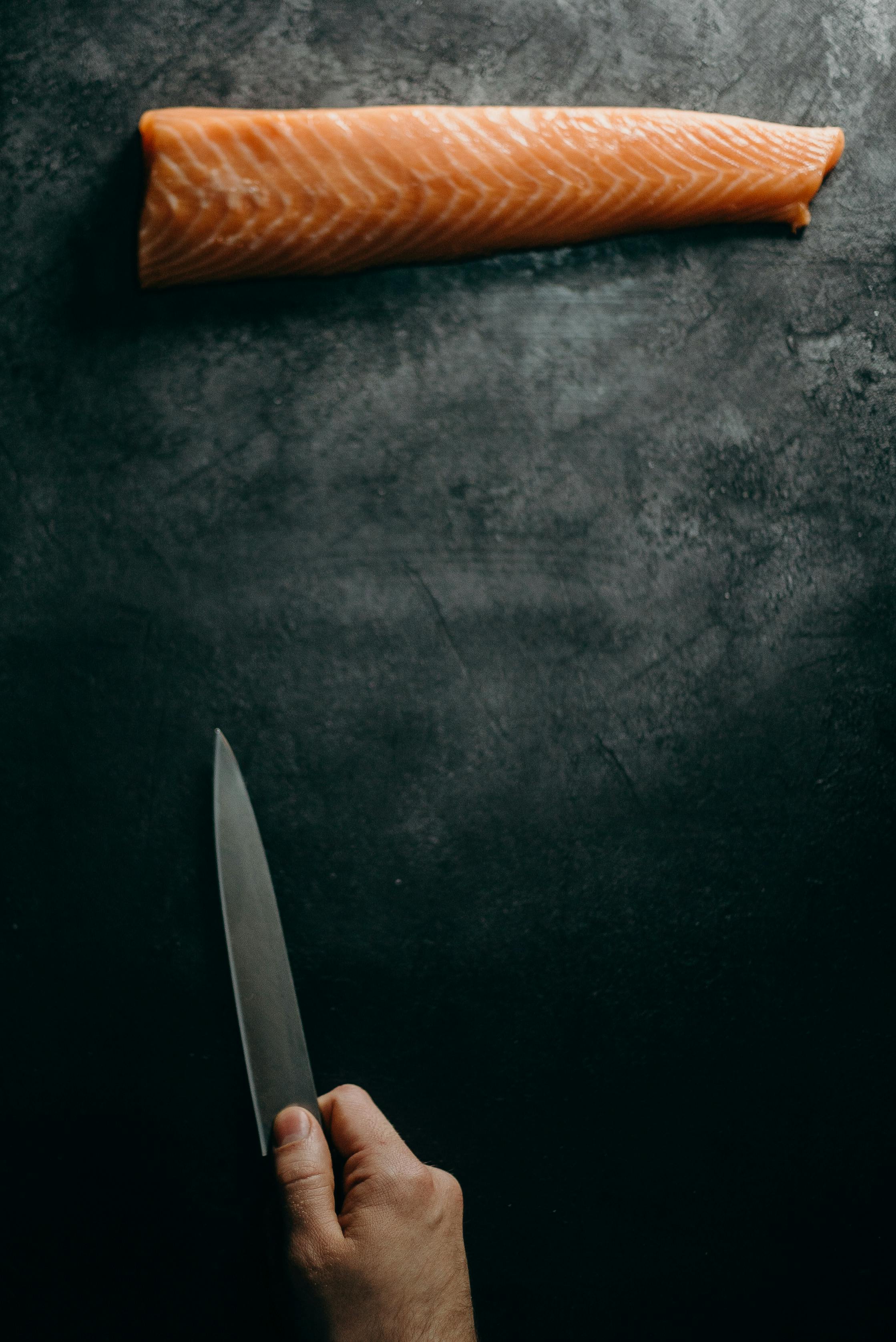We All Think We're Great with a Knife Until Someone Asks us to Chiffonade

We’re all family here, right? Family cares about each other, which means sometimes we say things that the other person doesn’t want to hear. We say these things because we love each other.
Well, it’s time to talk about knife skills.
The knife is the most basic and essential piece of equipment in the kitchen. Perhaps because of that, it is often the least appreciated tool. I’ve been with many cooks (both professional and home-kitchen enthusiasts) with poor knife skills, and they compensate for it with a “good enough” attitude.
“I only need to turn this onion into a bunch of tiny pieces of onion. I’m not trying to be Gordon Ramsay.”
“I have nothing to show off. It’s just slicing a cucumber.”
“Dude, I’m just cutting a tomato. It’s not a big deal.”
It’s actually a big deal. It’s a really big deal.

Why Knife Skills Are Important
Inconsistency: Try a little experiment with me. Grab a zucchini, wash it well, peel it if you want, then slice it in uniform, ⅛-inch slices. How did it go?Inconsistent cutting can botch a meal. It’ll result in some of your food being dry and overcooked, and other parts of the food being raw. At the very best, it will look ugly, and at the very worst, it is dangerous for your health and delivers subpar results.
If I’m thin-slicing an onion, I want that whole thing to caramelize uniformly. I can’t do that if I sliced the whole thing haphazardly with some slices being paper thin and other slices looking like onion rings. That’ll just end in caramelizing an onion that is all at once bitter and burned, yet undercooked and pungent. Boo!
Inefficiency and Burnout: The better you are with a knife, the faster you are with a knife.
From time to time I’ve avoided a recipe because I didn’t want to spend all that time chopping (have you ever made ratatouille?). However, the better I’ve gotten with a knife, the less that has been a factor in my meal choices. When it takes me just thirty seconds to julienne three bell peppers, but it takes Betsy down the street five whole minutes, you can easily guess who is having a better time in the kitchen.
Safety: One aspect of knife skills is knowing how and when to sharpen with your knife. I’ve seen way too many people work with dull knives. In fact, that’s the norm. My grandma and I are the only people I know in their private kitchen who work with regularly sharpened knives.
What’s the big deal with a dull knife?
- Dull knives don’t just cut—they crush. Maybe the reason you hate cutting onions so much is because you’re using a dull knife that turns the cells of that little vegetable into little chemical canisters that shoot irritating allicin all over your kitchen? Eh? Maybe the reason you end up with so much tomato juice on your cutting bored is because you smashed the thing when you should have been dicing it? Eh?
- Dull knives are imprecise and make it difficult to get the results you’re actually looking for.
- Dull knives are dangerous. They’re much more likely to slip off the food and cut your hand than a good, sharp knife would. This can be especially dangerous because you’re pushing extra hard (because, hey, it’s dull), which means you’ll shove that thing really hard into your fingers, and guess what… it’s dull! Instead of just cutting your hand it’s going to tear your hand. Getting cut by a dull knife sucks. Oh, but you’re used to cutting with a dull knife and you never hurt yourself. You’ve learned to compensate by pinching the vegetable really wide and staying far away from your skin, thus giving you the inconsistent results we already talked about.
Creative Limitation: So many of us have been cooking our whole lives using poor technique on dull knives. And because of this, we’re used to it! It’s like being a piano player your whole life, but you’ve only ever played on a tiny, out-of-tune keyboard with no pedals. If you upgrade your instrument a little bit (sharpen the knife) and learn to play with pedals (study just a small collection of cutting techniques), you’ll realize there’s an entire universe of culinary adventures you can go on, but you were being held back by a knife.
In the end there’s no way around it. You can have the best recipes, you can know perfectly how to salt your food pre-cook, and you know exactly how heat transfers in a conductive vs convective vs radiative cooking apparatus. You’ve studied the history and evolution of pantry fermentations and have even developed specialized recipes based on the seasonal ingredients endemic to your region. It doesn’t matter; you’ll never become “that chef” — the one who delivers consistently good meals and who has no limits beyond their imagination — until you’ve made best friends with your knife.
But I’ve got great news! Knife skills take a little bit of focused effort, but once you’ve learned it, you’ve learned it! It’s seriously like riding a bike. Just a few of us need to stop riding it backwards and need to replace those flat tires.
How to Hold a Knife
Let’s start with how not to hold a knife:
Do NOT grip the knife like a club, then use your pointer finger on the back of the blade to try to create enough pressure to score your cuts. Let’s call this the “club grip.” If you have to do this, it tells us one or a few things:
- Your knife is dull.
- Your knife is too small.
- You’re afraid of the knife.
Another problem with this grip is it is very limiting. The tendons in your wrist are all tense, so it’s hard to slice, twist, prune, and trim. Instead, it’s only crush with blade.
Instead, you want to loosely hold the knife, and you want your hand to be as close up to the blade as possible. Then you pinch the back of the blade between the tip of your thumb and the knuckle of your index finger. This is the most balanced point of the blade, which will give you more mechanical advantage and control over what the blade does.

Holding the knife like this lets you manage the pressure, angle, and fine movements of the blade. It’s no longer you using a hunk of metal to make big things small on a cutting board. Suddenly it’s you and a sleek band of steel working in harmony to make magic happen. You can chop, slice, drag, dragon slice, pare, trim, sculpt, prune, fan, slide, and do all manner of fancy kitchen verbs now that that knife is held in a relaxed grip and you’ve attained a proper fulcrum.
The Most Basic Knife Skills
For a while I considered writing out precise instructions on how to perform the most important knife techniques. But let’s be real, reading that would be about as useful as reading a book about what chicken tastes like. A newsletter article is not the best medium.Instead of the exhaustive instructions, I’m going to provide a list of the most fundamental cutting techniques, and I strongly suggest you consult YouTube and just look up how to perform these skills yourself. And after that? Practice, practice, practice! No culinary school needed!
Dice: Cut food into small, uniform cubes. This is perfect for sautees, stews and soups. It allows foods to cook evenly and uniformly.
Mince: This is turning the dial up on your cubing and chopping something up so finely that it turns into a paste. This is most common with aromatics, especially garlic and onion, but I do it frequently with peppers and anchovies as well.
Julienne: For when you want your vegetables to be a little more vegetable. Cut your veggies into long, thin strips. Think fajitas. But once you know how to properly julienne, you use this technique for much more than fajitas.
Chiffonade: Take a bunch of basil. Roll the leaves up together like your rolling a cigar. Slice the leaves thinly across that rolled cigar. This will end with a bunch of tiny strips of basil. The true magic of this knife technique is avoids pressing your herbs too tightly into the cutting board, so more of those essential oils stay in the leaf instead of bleeding out and onto your cutting surface. This ultimately leaves you with much more fragrant and flavorful garnishes.
Butterfly: Split meat or fish horizontally without completely separating the halves. This is essentially a quick version of rendering your meats thinner and more uniform, resulting in a quicker cook time and preventing pieces from overcooking. It’s also the first step to making stuffed chicken.
 Matthew Christensen
Matthew Christensen
Weekly Newsletter Contributor since 2023
Email the author! matthew@dvo.com
